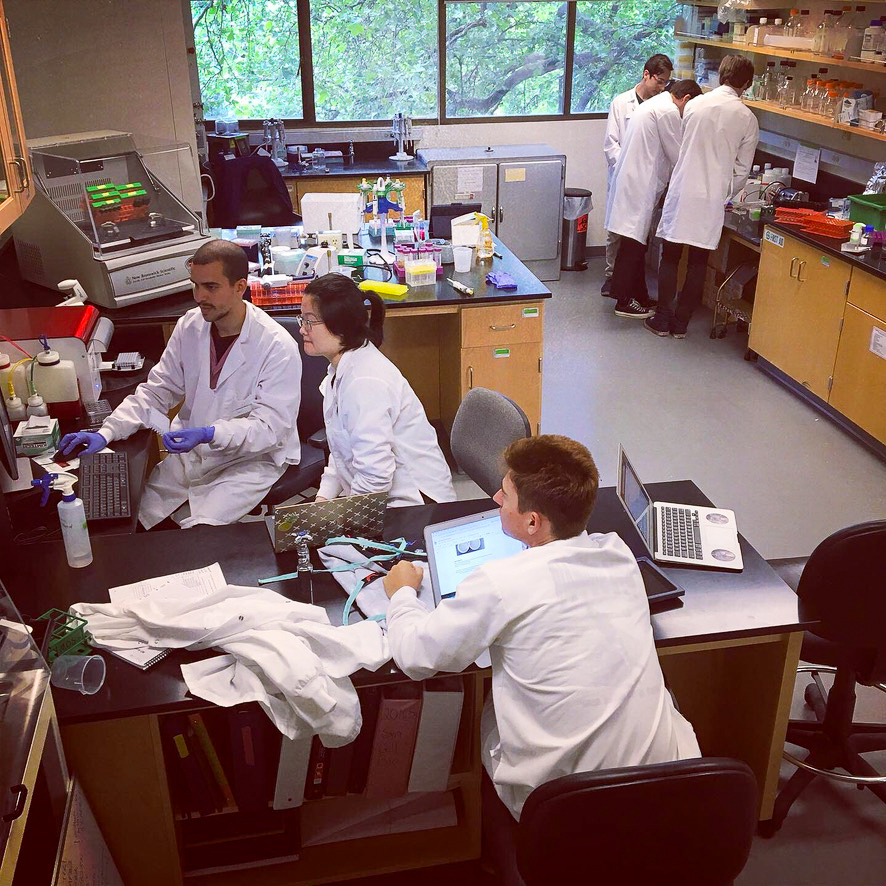
The story of Harper Joy Theatre’s recent “Around in the World in 80 Days” in certain ways encapsulated the experience of putting on a play: Five kids break into the attic of a museum with the intention of hanging out there, but find themselves crafting a setting and a story from the surrounding objects based on Jules Verne’s novel of the same name. The play debuted on March 4 and ran through March 7.
This interpretation of playwright Mark Brown’s adaptation is actually the work of director Nancy Simon herself. In her version of the play, Simon drew upon the imagination of both the actors and the audience to build the grand world of Verne’s sweeping adventure: A unicycle and some cloth, for example, became a ship and a coach horn, while a lampshade and a ventilation coil became an elephant.
The cast was small but talented, consisting of senior Kelsey Yuhara, juniors Zach Simonson and Chris Reid and first-years Nik Hagen and Jeremy Howell.
Partly because of Simon’s decision to allow cast members to improvise certain scenes and make character decisions, the production posed to them a number of unique opportunities and challenges. For Howell, the biggest struggle was giving dimension to characters who each received relatively little time on stage. Howell played a whopping 17 different roles in the show, all of which spanned a wide variety of temperaments and dialects.
“I would sit by myself in my room when my roommate wasn’t there and I would just mess around with my mouth, like practicing tongue placement or where my lips should be, and I would read anything I could find and try to read it in that voice,” Howell said, describing the preparation involved in mastering each accent. “It’d get to the point where I wasn’t doing the accent for just my lines, but I was doing the accent for anything: that’s when I felt that I was comfortable with it.”

Hagen noted that it was difficult to sustain a high level of energy throughout the duration of the comedy, which lasted roughly two hours and 15 minutes.
“I think there’s a large physical aspect to it,” he remarked. “It’s very exhausting to do every night . . . But I mean, the play’s just really fun, so I found it very easy to connect with the character and get along and interact with the other people onstage.”
Hagen was also impressed by the amount of license given to the actors to make certain choices and improvise onstage, as well as the amount of collaboration involved in making those decisions.
“This is the first play that I’ve had a director do an interpretation of,” he said. “So it was very interesting to see the process which we went through to figure it out and figure out what was going to happen to lead us up to the part where the script actually started. That first scene where we’re breaking into the museum, a lot of it is just improv.”
Although Hagen said that the scene had a general structure that was followed each night, there was still flexibility for the actors to experiment with the material.
“Sometimes the lines kind of change and sometimes I don’t necessarily follow the exact same route, so that first scene is just bullet points that we get to fill in,” Hagen said.
To bring this kind of collaboration to the show was, of course, Simon’s intention; she wanted to both address certain production challenges the play presented as well as take a distinct and innovative approach in doing so.
“I wanted our production to be different,” she said. “I mean this play has been produced a lot around the country . . . so we just wanted to find our own particular voice for the play . . . I’m really not quite sure what the genesis of the idea was . . . I liked the idea of a group of young people living in their imaginations, and then it was a matter of finding what the place would be where that might be a possibility.”

Although the spontaneity of the show was a challenge, it was also a thrill.
“Every show you take on is a challenge because you don’t know how it will go and where it will go, and this show was very much an ensemble show and very much created as we went along,” said Simon. “It was actually a hell of a lot of fun. It was like when you’re a kid and you play fantasy games: that’s pretty much where we were.”














